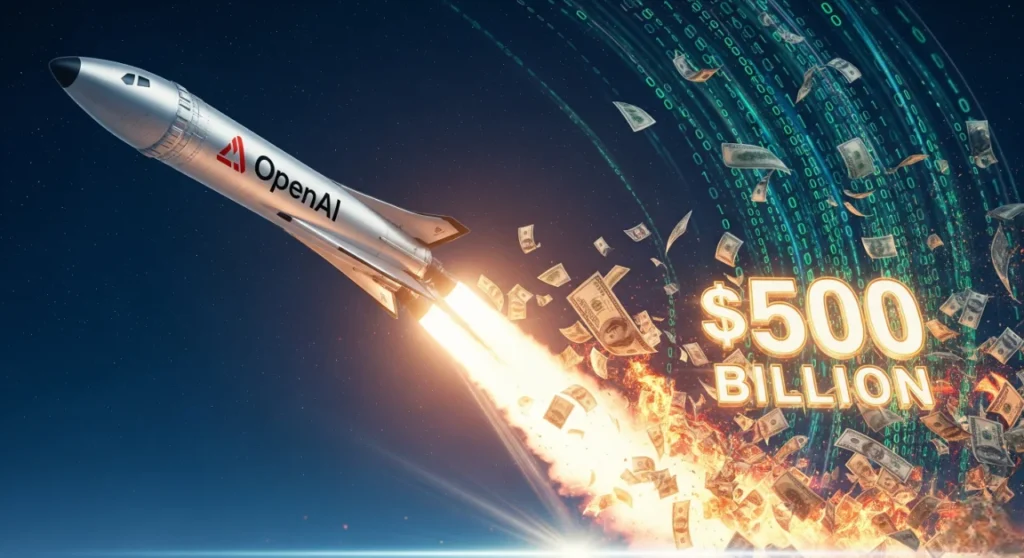In a week packed with game-changing AI news, OpenAI unveiled GPT-5, inked a major U.S. government partnership, and is reportedly closing in on a jaw-dropping $500 billion valuation. But as excitement peaks, experts warn of signs that feel eerily similar to past tech bubbles.
Key Takeaways:
- OpenAI’s valuation may leap from $300B to $500B via a share sale.
- GPT-5 launch and U.S. partnership add fuel to the hype.
- AI dominates funding—37% of July’s $29.7B global VC investments.
- Analysts warn of “euphoria” and bubble-like patterns.
The AI world just hit a new high-water mark—and maybe a warning sign.
OpenAI, led by CEO Sam Altman, is reportedly closing a share sale that could push its valuation to $500 billion—a staggering leap from $300 billion earlier this year. The milestone arrives as the company unveils GPT-5, its most advanced AI model yet, and formalizes a sweeping partnership with the U.S. government.
The half-trillion number alone is enough to make headlines. But it’s not just OpenAI grabbing investor attention. Anthropic is reportedly valued at $170 billion, Elon Musk’s xAI is chasing $200 billion, and AI search startup Perplexity is said to be worth $18 billion.
The Numbers Behind the Hype
According to Crunchbase, global venture funding hit $29.7 billion in July, down from $43 billion in June. Yet AI continues to command the lion’s share—37% of all funding, or roughly $11 billion. That concentration underscores where the tech world’s bets are going, even as the broader market shows caution.
Nnamdi Okike, cofounder and managing partner at 645 Ventures, says the speed and scale of these raises are “happening quickly.” Some companies may well justify these valuations, but history shows only a handful of players tend to win big.
“When valuations rise this fast, it often signals euphoria,” Okike notes. “We’ve seen similar patterns during the Dotcom bust and the search engine wars.”
Why This Matters
Investor enthusiasm can be a double-edged sword. High valuations and massive funding rounds can accelerate innovation—but they also risk inflating expectations beyond reality. If history is any guide, most of these sky-high valuations won’t survive the long haul.
OpenAI, however, may be one of the rare exceptions. With a leading AI model, a growing ecosystem, and now federal government backing, it’s positioned to remain a dominant force. Still, the sheer speed of market escalation has analysts watching closely for signs of overreach.
The Big Picture
The AI boom shows no signs of slowing, but its trajectory feels familiar. Just as with the early internet, today’s frenzy will likely mint a few lasting giants—and leave many others as footnotes. For now, investors and onlookers alike are left asking: is this the dawn of a new era, or the prelude to a bubble?
